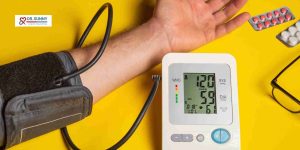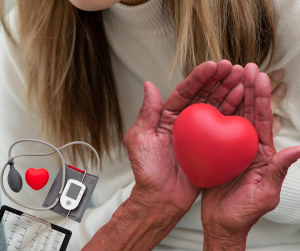As a cardiologist serving patients in Brampton, Mississauga, Caledon, and Milton, Ontario, one of the most common issues I see in practice is lipid disorders. These conditions, which involve abnormal levels of lipids (fats) in the blood, can significantly increase your risk of developing heart disease, stroke, and other cardiovascular issues. It’s crucial to manage lipid disorders through lifestyle changes and, when necessary, medications to maintain optimal heart health.
In this article, I will explain what lipid disorders are, how they can affect your heart, and the steps you can take to manage or prevent them. If you’re seeking help from a heart doctor or cardiologist near me, understanding lipid disorders is an important first step in improving your cardiovascular health.
What Are Lipid Disorders?
Lipid disorders are conditions in which there are abnormal levels of fats (lipids) in the blood, particularly cholesterol and triglycerides. These lipids are essential for the body’s functioning, as they serve as energy sources and are necessary for cell membrane structure. However, when lipid levels become too high or too low, they can pose significant risks to your cardiovascular health.
The two main types of lipids that affect heart health are:
- Cholesterol: There are two main types of cholesterol:
- Low-Density Lipoprotein (LDL), often referred to as “bad cholesterol,” which can build up on the walls of arteries, leading to blockages and an increased risk of heart disease and stroke.
- High-Density Lipoprotein (HDL), or “good cholesterol,” which helps remove LDL cholesterol from the bloodstream, reducing the risk of cardiovascular disease.
- Triglycerides: These are a type of fat in the blood that stores excess energy. Elevated triglyceride levels, especially when combined with high LDL or low HDL cholesterol, can increase the risk of heart disease and stroke.
Causes and Risk Factors of Lipid Disorders
Lipid disorders are influenced by several factors, both genetic and lifestyle-related. Common causes and risk factors include:
- Diet: A diet high in saturated fats, trans fats, and cholesterol can raise your LDL cholesterol levels and triglycerides. In contrast, a healthy diet rich in fiber, healthy fats, and low in processed foods can help maintain balanced lipid levels.
- Obesity: Being overweight or obese can lead to higher levels of triglycerides and LDL cholesterol, as well as lower levels of HDL cholesterol.
- Physical Inactivity: Lack of exercise can contribute to higher triglyceride levels and lower HDL cholesterol levels.
- Smoking: Smoking can reduce your levels of HDL cholesterol, impair the ability of your blood vessels to dilate properly, and increase your risk of cardiovascular disease.
- Genetics: Some lipid disorders, such as familial hypercholesterolemia, are inherited conditions that cause high cholesterol levels from birth.
- Chronic Conditions: Conditions like hypertension (high blood pressure), diabetes, and hypothyroidism can also contribute to lipid imbalances.
- Alcohol: Excessive alcohol consumption can increase triglyceride levels and contribute to other health issues, including high blood pressure and liver disease.
Symptoms of Lipid Disorders
In most cases, lipid disorders do not have overt symptoms, which is why they are often referred to as a “silent” condition. Many individuals may have high cholesterol or triglyceride levels without realizing it until they undergo a blood test. However, when lipid disorders lead to complications like heart disease or stroke, symptoms may arise, such as:
- Chest Pain: When LDL cholesterol builds up in the arteries, it can narrow the blood vessels and reduce blood flow to the heart, causing chest pain (angina).
- Shortness of Breath: Reduced blood flow to the heart or lungs can lead to shortness of breath, particularly during physical exertion.
- Palpitations: An abnormal heartbeat may occur as a result of cardiovascular issues caused by lipid imbalances.
- Dizziness: Poor circulation from narrowed arteries can lead to dizziness or lightheadedness.
- Stroke Symptoms: If lipid disorders cause significant narrowing or blockage of the arteries supplying the brain, it can result in stroke. Symptoms of a stroke may include sudden numbness, weakness, trouble speaking, or severe headache.
If you experience any of these symptoms, particularly chest pain, palpitations, or shortness of breath, it’s important to consult a cardiologist promptly.
How Are Lipid Disorders Diagnosed?
The diagnosis of lipid disorders typically involves the following:
- Blood Test (Lipid Profile): A lipid profile is a blood test that measures the levels of total cholesterol, LDL cholesterol, HDL cholesterol, and triglycerides. This is the most common method for diagnosing lipid disorders and is typically done during routine health checkups.
- Physical Examination: Your heart doctor may check for signs of high cholesterol, such as the presence of yellowish deposits around the eyes or joints, which can occur in some lipid disorders.
- Family History: Since lipid disorders can be hereditary, your cardiologist may inquire about your family’s health history to assess whether you have a genetic predisposition to high cholesterol or other lipid issues.
- Other Tests: In some cases, additional tests like an electrocardiogram (ECG) or echocardiogram may be performed to check for heart damage caused by lipid imbalances.
Treatment Options for Lipid Disorders
Once diagnosed, lipid disorders are typically managed through lifestyle changes and, if necessary, medications. Common treatments include:
Lifestyle Modifications
- Dietary Changes: Reducing the intake of saturated fats, trans fats, and cholesterol while increasing fiber, healthy fats (like those found in nuts, seeds, and fish), and fruits and vegetables can help balance lipid levels.
- Exercise: Regular physical activity, such as walking, cycling, or swimming, can help lower LDL cholesterol, raise HDL cholesterol, and lower triglycerides.
- Weight Management: Achieving and maintaining a healthy weight can significantly improve lipid profiles and overall cardiovascular health.
- Quit Smoking: Stopping smoking can raise HDL cholesterol levels and improve circulation.
- Limit Alcohol Consumption: Reducing alcohol intake can help lower triglycerides and reduce your risk of cardiovascular complications.
Medications
For individuals who cannot manage their lipid levels through lifestyle changes alone, medications may be necessary. The most common types of medications include:
- Statins: These drugs lower LDL cholesterol and are often the first line of treatment for lipid disorders.
- Fibrates: These drugs help lower triglycerides and increase HDL cholesterol.
- Niacin: Niacin (vitamin B3) can help increase HDL cholesterol levels.
- Bile Acid Sequestrants: These medications help lower LDL cholesterol by binding to bile acids in the digestive system.
- PCSK9 Inhibitors: A newer class of drugs that lower LDL cholesterol levels by targeting specific proteins in the liver.
- Cholesterol Absorption Inhibitors: These drugs help prevent the absorption of cholesterol from the food you eat.
When to See a Cardiologist
If you are concerned about your lipid levels or have a family history of heart disease, it’s important to consult a cardiologist for a thorough evaluation. A heart doctor near me can help determine the best treatment plan to manage your lipid levels and reduce your risk of heart attack, stroke, and other cardiovascular complications.
If you experience symptoms like shortness of breath, chest pain, or palpitations, it is essential to seek immediate medical care. A cardiologist will be able to assess your lipid levels and recommend a personalized treatment plan.
Conclusion
Lipid disorders are a major contributor to cardiovascular disease, but they are manageable with proper care and attention. If you’re concerned about your lipid levels, it’s important to consult a cardiologist in Brampton, Mississauga, Caledon, or Milton. By making lifestyle changes, monitoring your lipid levels, and, when necessary, using medications, you can reduce your risk of heart disease and improve your overall health.
Remember, early diagnosis and proactive management are key to preventing serious complications. Let a trusted cardiologist doctor near me help guide you on your path to better heart health.



